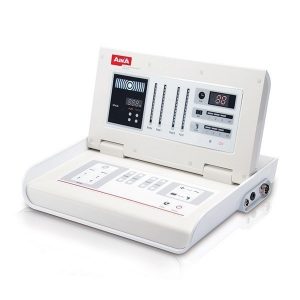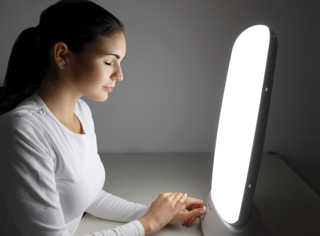With winter quickly approaching, we are always starting to feel not only the physical affects of a new season, but also the mental changes we all undergo. The sun is beginning to set far too early and our internal mental clocks are all out of whack. With this change happening, it’s more important than ever to make sure your body is receiving it’s proper amount of vitamin D.
This can be rather difficult in the winter, especially if you work a full time job, but it’s not something you can ignore. We know why vitamin D is so important but do you? Let’s get down to it.
It All Starts with Sunlight…
Sunlight, sunshine, the sun, daylight, sun rays, whatever you choose to call it, chances are you know what all of these terms mean, but do you understand the power of the sun? The sun is not only crucial to keep the earth alive and well, but also us! We need the sun to stay healthy!
Sunlight is a portion of the electromagnetic radiation that is given off by the all mighty and powerful sun. Using more specific terms, the sun gives off infrared, visible, and ultraviolet light. For us folks down on Earth, sunlight is filtered through the atmosphere surrounding the Earth, thus providing us with daylight. This means the sun is present above the horizon. When the sun’s rays are not being by blocked by clouds, which creates diffused light, they shine right on down to us. This creates sunshine, which is an unbeatable combination of radiant heat and bright light.
Too much sun isn’t always a good thing. It’s important to always wear sunscreen, protect your skin from overexposure, and always drink enough water. The sun is more than powerful and can easily control our bodies.
If you’re like us, you cross your fingers, pray to the weather gods, and hope with everything inside of you that every single day of the year will be sunny. This is because sunlight is known to have positive effects on the brain, can drastically improve your skin, can ease health problems, and most definitely raises energy levels. If we are smart about how we manage our time with the sun and how it fits into our lives, we can be exposed to a world of health benefits. For example, Vitamin D, which is crucial for our bodies to remain healthy, is activated within us when we are exposed to sun.
Understanding Vitamin D…
Vitamins are chemicals that our bodies require in order for them to remain healthy. They help us fight illnesses, keep us strong, help us heal, and keep our insides working well together. Vitamin D, which is most commonly known for helping promote strong and healthy bones, can be created by the sunlight or taken in pill form. It is pretty remarkable that sunlight, when exposed to the skin, can help our bodies create Vitamin D. This is the only vitamin that can make itself. We must get our other vitamins through our foods. Vitamin D doesn’t rely on our diet. It relies on our exposure to sunlight.
Why Is It So Important?
Our bodies need and crave Vitamin D in order to keep our bones strong and healthy. The Vitamin D Council, a website dedicated to all things Vitamin D related, took to their blog to explain why Vitamin D is so important:
“Vitamin D is very important for strong bones. Calcium and phosphorus are essential for developing the structure and strength of your bones, and you need vitamin D to absorb these minerals. Even if you eat foods that contain a lot of calcium and phosphorus, without enough vitamin D, you can’t absorb them into your body. Vitamin D is important for general good health, and researchers now are discovering that vitamin D may be important for many other reasons outside of good bone health. Some of the functions of the body that vitamin D helps with include:
- Immune system, which helps you to fight infection
- Muscle function
- Cardiovascular function, for a healthy heart and circulation
- Respiratory system –for healthy lungs and airways
- Brain development
- Anti-cancer effects
Doctors are still working to fully understand how vitamin D works within your body and how it affects your overall health.
If your body doesn’t get enough vitamin D to keep it healthy, this is called vitamin D deficiency. Severe vitamin D deficiency can sometimes cause a condition called rickets in children and a condition called osteomalacia in adults. Both of these conditions cause soft, thin, and brittle bones.
A lack of vitamin D has also been linked to some other conditions such as cancer, asthma, type-II diabetes, high blood pressure, depression, Alzheimer’s and autoimmune diseases like multiple sclerosis, Crohn’s and type-I diabetes.” (VitaminDCouncil.org)
Could You Be Vitamin D Deficient?
Vitamin D deficiency is far more common than most people would ever think. How can something that is activated by a natural part of our world not being taken advantage of? There are many factors that can come into play when it comes to Vitamin D deficiency. For example, some parts of the world remain dark for extended amounts of time for specific seasons. Some states, such as Seattle, are gloomy and rainy for a high percentage of the year. Some people are afraid of too much sun, and some, just simply don’t make or don’t have the time for sun exposure. There are a whole slew of reasons why people could be lacking Vitamin D and the statistics that prove just how many people are struggling will blow your mind.
Healing Therapies, a website dedicated to medical studies, has a blog titled, “Vitamin D: Facts and Statistics.” In this article, the Vitamin D deficiency statistics are laid out.
- 32% of doctors and medical school students are vitamin-D deficient.
- 40% of the U.S. population is vitamin-D deficient.
- 42% of African American women of childbearing age are vitamin-D deficient.
- 48% of young girls (9-11 years old) are vitamin-D deficient.
- Up to 60% of all hospital patients are vitamin-D deficient.
- 76% of pregnant mothers are severely vitamin-D deficient, causing widespread vitamin-D deficiencies in their unborn children.
(HealingTherapies.Info)
But How Does Vitamin D Work?
Okay so now you know what sunlight is, and you know what Vitamin D is, but now you need to know how the two work together to keep us healthy. It’s quite simple…chemical processes!
The Vitamin D process begins with your liver. Whether you are exposing yourself to sunlight to receive Vitamin D or you are taking supplements, your body is going to send the Vitamin D to your liver. Once your body reaches this point, your liver is going to take that Vitamin D and change it into a different substance. This substance is called 25(OH)D. As the Vitamin D Council explains, “When your doctor talks about your vitamin D levels, he means the amount of 25(OH)D you have in your blood.” Hey, thanks liver!
From this point, the chemical is sent throughout your body and it’s ready to get to action! Our tissues turn it into activated Vitamin D and your body will begin to receive the long list of health benefits.The Vitamin D Council came to the rescue again to simplify what is definitely not a simple thing. The website explains, “From here, it gets a little complicated, but you can think of activated vitamin D working in two ways:
Manages calcium in your blood, bones and gut;
Helps cells all over your body to communicate properly.”
As you can see, Vitamin D deserves an article entirely to itself. It’s complex, interesting, and majorly beneficial. However, if we were forced to sum up vitamin D for you in just one short blurb…this is what we would tell you…
Our bodies need vitamin D and the sun can give deliver it. Why not take advantage of what this world has to offer? Your body will thank you! Especially during the winter!









